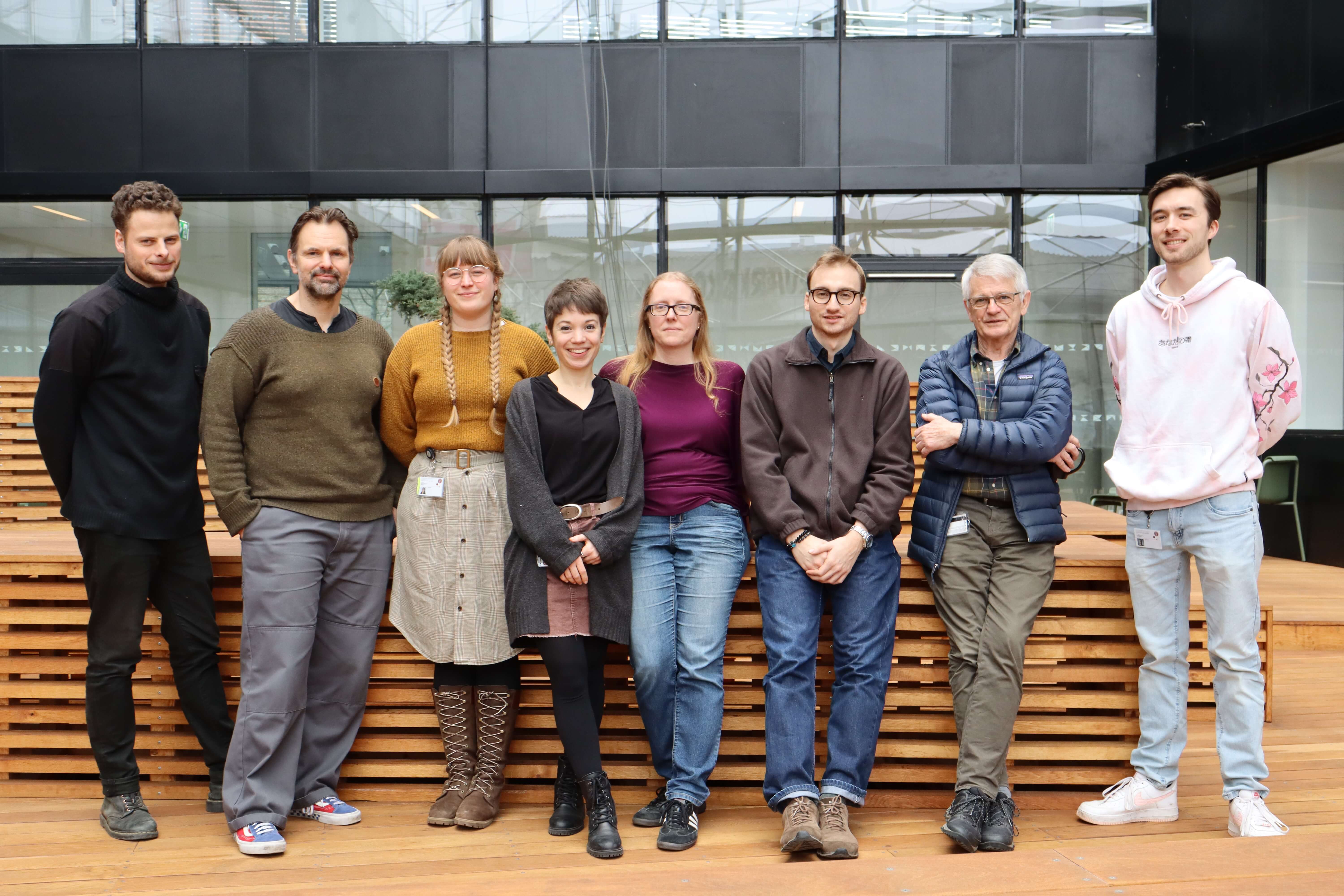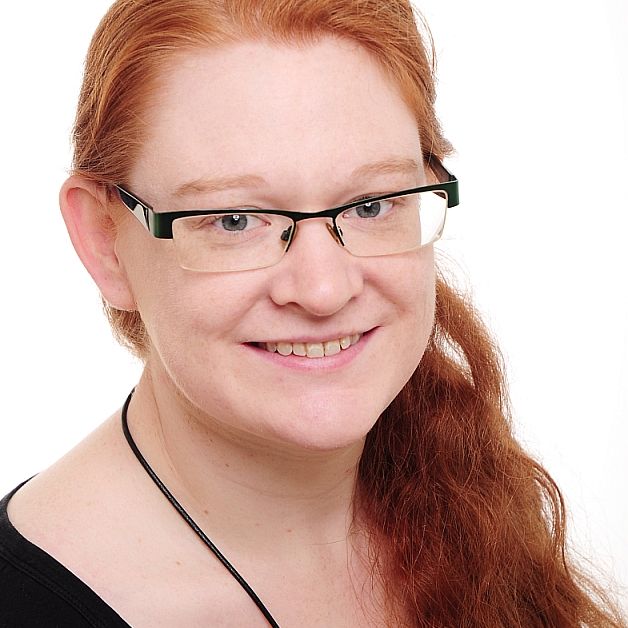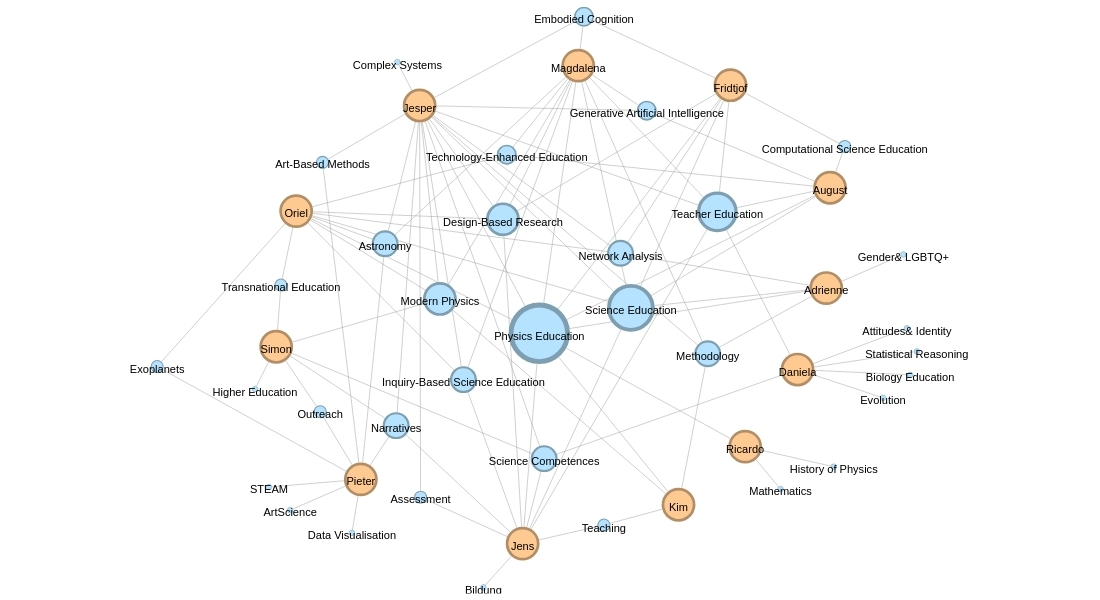Physics Education Research (KUPER)
The Physics Education Research group (KUPER) has a broad interest in the teaching and learning of physics across all educational levels. By combining tools and methods from the natural and social sciences as well as history and philosophy of science, we aim to improve instructional practices and shed light on learning processes that are unique to the physics discipline.

Research group members
| Associate Professor, Jesper Bruun I work with technologies and novel teaching formats in the Sciences, primarily focusing on Physics. My work spans upper-secondary and university education levels, concentrating on mechanisms relevant to the teaching and learning of Physics. Recently, I have focused on Learning Analytics to leverage big data in understanding and improving educational systems. Viewing educational systems as complex systems, I employ network analysis to explore patterns and mechanisms in teaching and learning dynamics. I collaborate closely with educational professionals to develop and refine teaching strategies and methodologies, emphasizing their implementation in teachers’ everyday practices. |
 |
| Assistant Professor, Magdalena Kersting My research intersects science education, embodied cognition, and technology perspectives, exploring how embodied experiences shape scientific understanding. My signature style of doing research is collaborative, across disciplinary boundaries, and in close partnership with practitioners. My methodological expertise lies in the combination of design-based research and different types of video analyses. I focus mainly on physics and science education, but my interests also extend into broader STEM disciplines and educational technologies.
|
 |
|
Associate Professor, Adrienne Traxler |
 |
| Professor Emeritus, Jens Dolin My research interest lies in teaching and learning science (with a focus on dialogical processes and the development of science competencies), including assessment (especially balancing formative and summative use) and organizational change (reform processes, curriculum development, policy work). Recent years also focus on science teacher education and teacher competence development (like assessment literacy). My overall focus is on policy aspects and how to use knowledge and influence to change practice. |
 |
| PhD Fellow, Fridtjof Gjengset I am currently working on a design-based research project to bring embodied cognition perspectives into STEM teacher education. I draw on current research on embodied cognition and operationalize it by iteratively designing and implementing educational interventions in teacher education. Finally, my goal is to examine how embodied cognition can help improve teaching computational science and programming in k-12 education. |
 |
| PhD Fellow, Oriel Marshall I am a 3rd year PhD student, and my project is about translating contemporary scientific research topics and concepts into teaching materials. I am part of the CHAMELEON exoplanet research network, and create both physical and digital interactive lessons about exoplanet climates, atmospheres, clouds and lightning. My research interests include Inquiry-Based Science Education, scientist-teacher partnerships, conceptual metaphors, physical analogies and network analysis. |
 |
| PhD Fellow, Pieter Steyaert I am a PhD candidate at the University of Antwerp and the University of Copenhagen, specializing in the integration of Art and Science within transdisciplinary practices. My research explores Astrophysics and Exoplanets as part of an MSCA ITN. Additionally, I co-founded the ArtScience collective SEADS. My main interest lies in understanding how artistic practices can contribute to new scientific insights. |
 |
|
Assistant Professor, Daniela Fiedler
Co-opt member of KUPER
I focus primarily on quantitative empirical research about the teaching and learning of biology in school and university (with a thematical focus on evolutionary biology). My research is centered around the development and influence of learners’ biological knowledge and associated concepts (such as understanding the threshold concepts of randomness and probability), attitudes towards evolution, or the impact of religious identity. I am also examining how digital learning environments and materials can support learning processes in biological contexts.
|
 |
Network illustration of the people currently in KUPER and their research topics

Among the topics of current research are:
- Educational implications of the interplay between physics and mathematics
- Using history of physics to teach physics
- Teaching formats and technology-enhanced physics education
- Narrative-based education in physics education
- Professional networks of women and LGBT+ physicists
- Characterizing active learning environments in physics
- Embodied cognition in physics education
- Einsteinian physics education
In each of our projects, we are guided by distinct research questions. The following selection gives you an idea of the questions we pose to advance our research.
Characterizing active learning environments in physics
- How do classroom observation and student network metrics distinguish different active learning pedagogies in physics?
- To what extent are the observation profiles identified through Latent Profile Analysis a replicable feature of a pedagogy?
- To what extent are network features associated with distinct observation profiles?
Conceptual challenges and teaching strategies regarding physics equations
- What assessment tools can investigate students’ conceptual understanding of physics equations?
- What are innovative teaching strategies that can help students acquire a deep understanding of the physics behind physics equations?
Educational implications of the interplay between physics and mathematics
- What characterizes good explanations in didactical settings (e.g. lectures, textbooks) that highlight the structural role of mathematics in physics?
- How can historical and philosophical studies on the relationship between mathematics and physics improve the teaching of these disciplines?
- What are typical difficulties to understand the application of mathematical concepts and structures (e.g. matrices, complex numbers, vector calculus, etc.) in physics? What are appropriate teaching strategies to circumvent them?
Einsteinian physics education
- How do learners make sense of key concepts of general relativity?
- What characterizes students’ understanding of the rubber sheet analogy of spacetime?
- How does Einsteinian physics influence middle-school girls’ perception of and orientation to physics?
Embodied cognition in physics education
- What is the role of the body in physics education?
- How does embodiment enable and restrict students' abilities to think scientifically?
- What imaginative activities do students engage with to communicate and make meaning with abstract scientific concepts?
Narrative Based Education in Physics education
- What are the requirements for integrating national science curricula with thematic coherence in Narrative Based Teaching?
- How do students engage with inquiry based science education in a narrative teaching approach?
- How does a narrative approach to science education affect student attitudes towards science.
Professional networks of women and LGBT+ physicists
- How are the professional support networks of women and LGBT+ physicists characterized in terms of size and density, type and multiplexity of ties, and overlapping communities vs. fragmentation?
- What similarities and differences exist when comparing between academia, industry, and government job sectors?
Physics for interdisciplinary learners
- What are physics teaching materials that are appropriate and related to interdisciplinary learners’ knowledge background?
- What are innovative learning strategies that can address the specific needs of interdisciplinary learners and ensure that the subjects being taught are meaningful and relevant to the students?
Teaching formats and technology-enhanced physics education
- How do learners experience and engage with a virtual reality tour of the solar system at a science festival?
- What are design principles for extended reality experiences in (in)formal physics and astronomy education?
- How can we visualise gravity in general relativity through an interactive simulation?
Using history of physics to teach physics
- How can primary sources be used productively to teach physics and in the education of future physics teachers?
- What characterizes good excerpts of original sources in terms of their pedagogical potential?
- Which pedagogical lessons can be extracted from selected excerpts of original sources of specific topics and how can they enable critical reflection about the traditional way these topics are taught?
Advanced analytical tools for mixed methods research
Bruun, J., Andersen, I. V. K., & Udby, L. (2021). Network Analysis of changes to an integrated science course curriculum over time. I O. Levrini, G. Tasquier, T. Amin, L. Branchetti, & M. Levrin (red.), Engaging with Contemporary Challenges through Science Education Research: Selected papers from the ESERA 2019 Conference (1 udg., s. 91-104). Springer. Contributions from Science Education Research Bind 9 https://doi.org/10.1007/978-3-030-74490-8_8
Bruun, J., & Andersen, I. V. K. (2017). Network maps of student work with physics, other sciences, and math in an integrated science course. arXiv.org: Physics Education, 1-4. [1708.01389 ]. https://arxiv.org/pdf/1708.01389
Bruun, J. (2016). Networks as integrated in research methodologies in PER. I D. Jones, L. Ding, & A. Traxler (red.), 2016 PERC Proceedings (s. 11-17). [2] American Association of Physics Teachers. PERC Proceedings https://doi.org/10.1119/perc.2016.plenary.002
Bruun, J., & Bearden, I. (2014). Time Development in the Early History of Social Networks: Link Stabilization, Group Dynamics, and Segregation. P L o S One, 9(11), [e112775]. https://doi.org/10.1371/journal.pone.0112775
Characterizing active learning environments in physics
Commeford, K., Brewe, E., & Traxler, A. (2022). Characterizing active learning environments in physics using latent profile analysis. Physical Review Physics Education Research, 18(1), 010113. https://doi.org/10.1103/PhysRevPhysEducRes.18.010113
Commeford, K., Brewe, E., & Traxler, A. (2021). Characterizing active learning environments in physics using network analysis and classroom observations. Physical Review Physics Education Research, 17(2), 020136. https://doi.org/10.1103/PhysRevPhysEducRes.17.020136
Traxler, A. L., Suda, T., Brewe, E., & Commeford, K. (2020). Network positions in active learning environments in physics. Physical Review Physics Education Research, 16(2), 020129. https://doi.org/10.1103/PhysRevPhysEducRes.16.020129
Educational implications of the interplay between physics and mathematics
A thematic issue of the journal Science & Education guest-edited by Ricardo Karam on this topic (Volume 24, Issues 5-6) can be found here.
Karam, R., Uhden, O. & Höttecke, D. (2019). The “Math as Prerequisite” Illusion: Historical Considerations and Implications for Physics Teaching. In: Mathematics in Physics Education. Pospiech, G., Michelini, M. & Eylon, B-S. (eds.). Springer, p. 37-52.
Karam, R., Krey, O. (2015). Quod erat demonstrandum: Understanding and explaining equations in physics teacher education. Science & Education, 24(6).
Karam, R. (2014). Framing the structural role of mathematics in physics lectures: A case study on electromagnetism. Phys. Rev. ST Phys. Educ. Res. 10, 010119.
Uhden*, O., Karam*, R., Pietrocola, M., Pospiech, G. (2012). Modelling Mathematical Reasoning in Physics Education. Science & Education, 20(4), 485-506. * Both authors contributed equally.
Einsteinian physics education
Kersting, M., Henriksen, E. K., Bøe, M. V., & Angell, C. (2018). General relativity in upper secondary school: Design and evaluation of an online learning environment using the model of educational reconstruction. Physical Review Physics Education Research, 14(1), 010130. https://doi.org/10.1103/PhysRevPhysEducRes.14.010130
Kersting, M., Schrocker, G., & Papantoniou, S. (2021). ‘I loved exploring a new dimension of reality’ – a case study of middle-school girls encountering Einsteinian physics in the classroom. International Journal of Science Education, 1–21. https://doi.org/10.1080/09500693.2021.1950943
Kersting, M., & Blair, D. (2021). Teaching Einsteinian Physics in Schools: An Essential Guide for Teachers in Training and Practice (1st ed.). Routledge. https://doi.org/10.4324/9781003161721
Embodied cognition in physics education
Steier, R., & Kersting, M. (2019). Metaimagining and Embodied Conceptions of Spacetime. Cognition and Instruction, 37(2), 145–168. https://doi.org/10.1080/07370008.2019.1580711
Kersting, M., & Steier, R. (2018). Understanding curved spacetime—The role of the rubber sheet analogy in learning general relativity. Science & Education, 27(7), 593–623. https://doi.org/10.1007/s11191-018-9997-4
Kersting, M., Haglund, J., & Steier, R. (2021). A Growing Body of Knowledge: On Four Different Senses of Embodiment in Science Education. Science & Education. https://doi.org/10.1007/s11191-021-00232-z
Teaching formats and technology-enhanced physics education
Kersting, M., Steier, R., & Venville, G. (2021). Exploring participant engagement during an astrophysics virtual reality experience at a science festival. International Journal of Science Education, Part B, 11(1), 17–34. https://doi.org/10.1080/21548455.2020.1857458
Kersting, M. (2019). Free fall in curved spacetime—How to visualise gravity in general relativity. Physics Education, 54(3), 035008. https://dx.doi.org/10.1088/1361-6552/ab08f5
Steier, R., Kersting, M., & Silseth, K. (2019). Imagining with improvised representations in CSCL environments. International Journal of Computer-Supported Collaborative Learning, 14(1), 109–136. https://doi.org/10.1007/s11412-019-09295-1
Bruun, J., Andersen, I. V. K., Alavi, K., Harder, S., & Holm-Janas, V. (2022). Marsbasen: Eksempler på alibi for undersøgelser i fysik C i gymnasiet. I T. Hanghøj, M. Misfeldt, J. Bundsgaard, & V. Hetmar (red.), Håndbog i scenariedidaktik (1 udg., s. 285-298). Aarhus Universitetsforlag.
Madsen, L. M., Evans, R. H., & Bruun, J. (2020). Undersøgelsesbaseret undervisning: 6F modellen, dens tilblivelse og udvikling i Danmark. MONA - Matematik- og Naturfagsdidaktik, 1, 26-45. https://tidsskrift.dk/mona/issue/view/8561
Bruun, J., Ray, P. J., & Udby, L. (2019). Network analyses of student engagement with on-line textbook problems. arXiv preprint arXiv:1903.11390.
Overgaard, J. H., Bruun, J., May, M., & Udby, L. (2017). Virtual neutron scattering experiments: Training and preparing students for large-scale facility experiments. Læring og Medier (LOM), 9(16), 1-28.
Bruun, J., & Christiansen, F. V. (2016). Kinaesthetic activities in physics instruction: Image schematic justification and design based on didactic situations. NorDiNa: Nordic Studies in Science Education, 12(1), 56-72.
Using history of physics to teach physics
Karam, R., Lima, N. W. (2022). Using history of physics to teach physics? in Connecting Research in Physics Education with Teacher Education 3, Guisasola, J. & McLoughlin E. (eds), The International Commission on Physics Education, Dublin.
Lima, N., Karam, R. (2021). Particle velocity = group velocity: A common assumption in the different theories of Louis de Broglie and Erwin Schrödinger. American Journal of Physics, 89, 5, p. 521-528.
Karam, R. (2020). Schrödinger's original struggles with a complex wave function. American Journal of Physics, 88, 6, p. 433-438.
Karam, R. (2018). Fresnel’s original interpretation of complex numbers in 19th century optics. American Journal of Physics, 86, 4, p. 245-249.
Karam, R., Coimbra, D., Pietrocola, M. (2014). Comparing Teaching Approaches About Maxwell’s Displacement Current. Science & Education, 23(8).
Quantifying classroom interactions, formative assessment and competencies in physics education
Bruun, J., & Evans, R. H. (2020). Network analysis of survey data to identify non-homogeneous teacher self-efficacy development in using formative assessment strategies. Education Sciences, 10(3), 1-21. https://doi.org/10.3390/educsci10030054
Ellegaard, M., Damsgaard, L., Bruun, J., & Johannsen, B. F. (2018). Patterns in the form of formative feedback and student response. Assessment and Evaluation in Higher Education, 43(5), 727-744. https://doi.org/10.1080/02602938.2017.1403564
Dolin, J, Bruun, J, Nielsen, SS, Jensen, SB & Nieminen, P 2018, The Structured Assessment Dialogue. i J Dolin & R Evans (red), Transforming Assessment: Through an interplay between practice, research and policy. 1 udg, bind 4, Springer, Switzerland, Contributions from Science Education Research, bind 4, s. 109-140. https://doi.org/10.1007/978-3-319-63248-3_5
Members
| Name | Title | Phone | |
|---|---|---|---|
| Adrienne Lorelei Traxler | Associate Professor | +4535337086 | |
| Daniela Fiedler | Assistant Professor - Tenure Track | +4535323782 | |
| Fridtjof Ronge Gjengset | PhD Fellow | +4535324010 | |
| Ian Bearden | Professor | +4535337626 | |
| Jesper Bruun | Associate Professor | +4535320391 | |
| Magdalena Kersting | Assistant Professor - Tenure Track | +4535323775 | |
| Ricardo Avelar Sotomaior Karam | Associate Professor | +4535337929 | |
| Simon Richard Goorney | PhD Student | ||
| Viktor Holm-Janas | PhD Fellow | +4535326920 |
Former visitors
- Marcia Saito - Federal Institute of Technology of the state of Paraná in Brazil
- Andrea diSessa – UC Berkeley
- Antje Heine – Technical University of Dresden
- Friedrich Herrmann – Karlsruhe Institute of Technology
- Ismo Koponen – University of Helsinki
- Manoel Roberto Robilotta – University of São Paulo
- Mikael Frank Rezende Junior – Federal University of Itajubá
- Débora Coimbra - Federal University of Uberlândia, Brazil
- Ricardo Lopes Coelho - University of Lisbon
- Dietmar Höttecke - University of Hamburg
- Nelson Studart Filho - UFSCar and UFABC
- Elina Palmgren - University of Helsinki
- Tuğbanur Dinçer - Hacettepe University
- Nathan Willig Lima - Federal University of Rio Grande do Sul
- Nathan Lombard - University of Montpellier
Contact
Associate Professor Jesper Bruun or Assistant professor, tenure track Magdalena Kersting
Research at IND
PhD Scholarship
Are you looking for opportunities for a PhD Scholarship? Find more information here.
